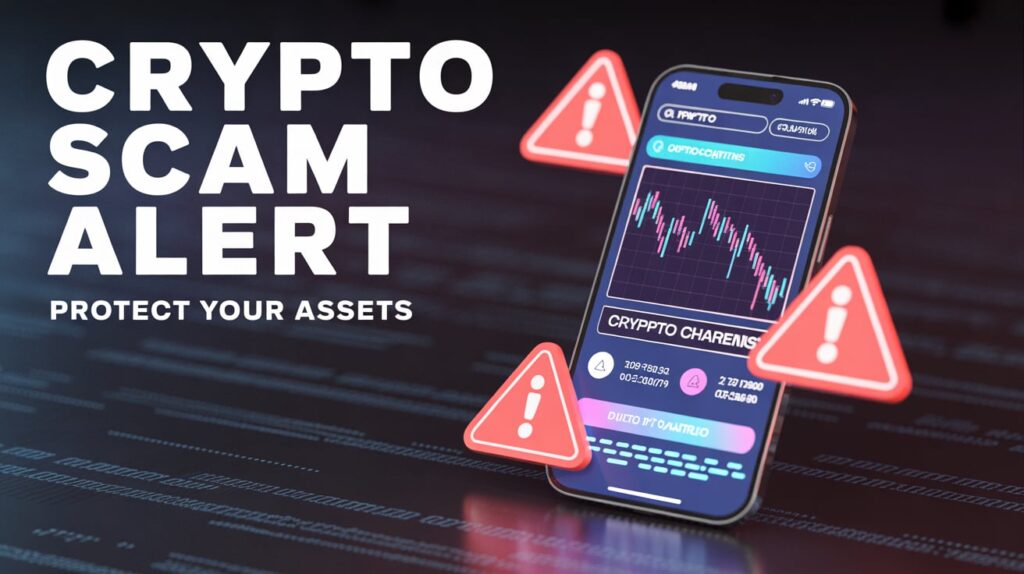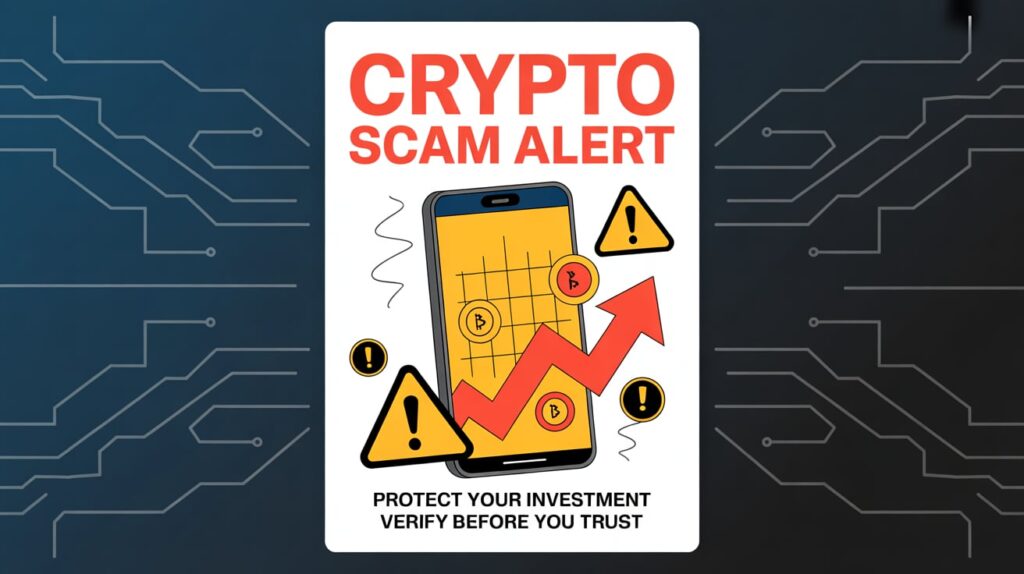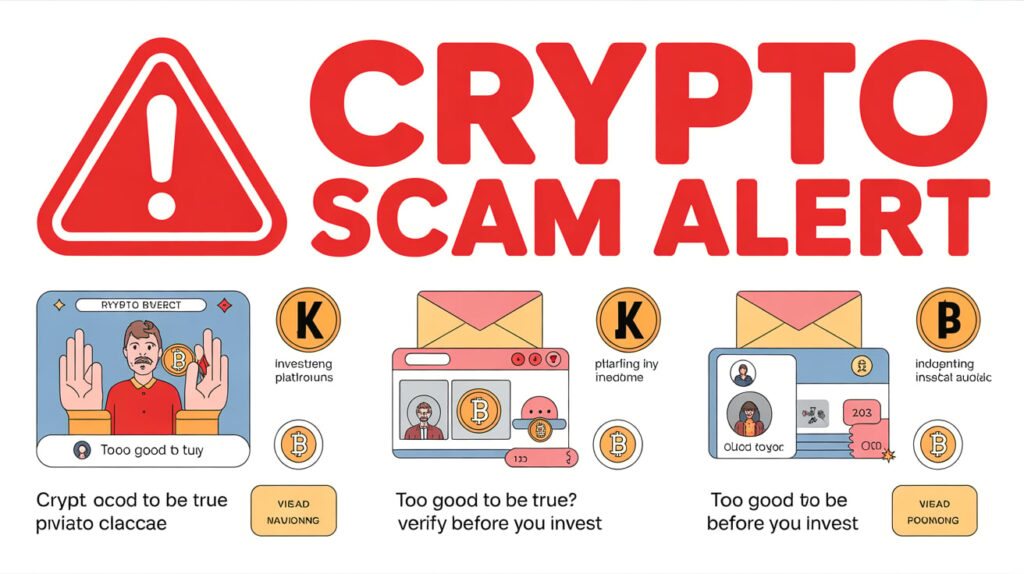Understanding the Growing Threat of the Crypto Scam: How to Stay Safe in 2025
Cryptocurrencies have transformed global finance — bringing innovation, speed, and opportunity to millions. But with this revolution also comes a darker reality: the rise of the Crypto Scam. From fake exchanges to phishing attacks, scammers are exploiting both new and experienced investors in one of the fastest-growing financial sectors in the world.
As digital assets become mainstream in 2025, so do the risks. Understanding what a Crypto Scam is, how it works, and how to protect yourself is more important than ever. This article from BTCMARKETNEWS
explores the most common scams, the latest trends, and expert-backed safety strategies to help you safeguard your assets.
🔍 What Is a Crypto Scam?
A Crypto Scam is any fraudulent activity designed to steal cryptocurrencies, private keys, or personal data from investors and traders. Scammers use social engineering, fake investment platforms, or deceptive marketing to lure victims into sending funds or revealing sensitive information.
Unlike traditional finance, blockchain transactions are irreversible, meaning that once your funds are stolen, recovery is almost impossible. That’s why awareness is your best defense.
Common forms of Crypto Scam include:
- Fake exchanges or wallets
- Phishing websites and email attacks
- Ponzi and pyramid schemes
- Rug pulls and pump-and-dump tokens
- Impersonation of trusted crypto brands or influencers
🧠 The Psychology Behind Every Crypto Scam
Behind every Crypto Scam lies one fundamental truth: scams succeed because they exploit human emotion.
Scammers rely on three psychological triggers:
-
Greed: “Double your money in 24 hours!”
-
Fear of Missing Out (FOMO): “Join before it’s too late!”
-
Trust by Association: Fake endorsements from celebrities or legitimate-looking websites.
When combined, these tactics push people to act quickly — without verifying the source.
💣 Common Types of Crypto Scams in 2025
1. Fake Investment Platforms
Fraudulent websites promise guaranteed daily profits or high-yield “staking” returns. Victims deposit funds and watch fake dashboards showing profits — until withdrawals suddenly fail.
Tip: Always verify a platform’s legitimacy using independent reviews on trusted news portals like
2. Phishing and Fake Wallets
A phishing-based Crypto Scam is one of the oldest and most effective tricks. Scammers create websites that mimic real ones (e.g., “binancee.com” or “metamask.io.co”) to steal login credentials or seed phrases.
Always check URLs carefully and use two-factor authentication (2FA) wherever possible.
3. Rug Pulls and DeFi Frauds
In decentralized finance (DeFi), rug pulls occur when developers launch a token, attract investors, then drain liquidity and disappear. In 2024 alone, rug pulls accounted for over $1.9 billion in crypto losses worldwide.
Look for audits, public team profiles, and transparent code before investing.
4. Ponzi and MLM Schemes
Ponzi-style Crypto Scam projects lure investors with “referral bonuses” or “passive income.” Early investors get paid from new deposits — until the system collapses.
If returns sound too good to be true, they always are.
5. Airdrop and Giveaway Frauds
Fake giveaways on social media claim you’ll receive free tokens if you send a “small verification fee.” This is a classic Crypto Scam — you’ll never see your money again.
Legitimate airdrops never ask you to pay upfront or share your wallet keys.
📉 The Scale of the Problem
According to Chainalysis’ 2025 Global Crime Report, losses to Crypto Scam operations exceeded $9.8 billion globally — a 12% rise from 2024.
The U.S., India, and parts of Europe remain top targets due to high adoption rates and inexperienced new users entering the market.
This explosion of fraud has prompted regulators and major exchanges to launch education campaigns focused on crypto literacy — but scammers are evolving just as fast.
🛡️ How to Spot a Crypto Scam
Here’s how you can identify red flags before you fall victim:
-
Unrealistic Promises: Guaranteed profits, daily returns, or zero risk.
-
Lack of Transparency: Anonymous developers, no whitepaper, or unverifiable audits.
-
Pressure Tactics: “Limited time offer” or “bonus ending soon.”
-
Unverified Links or Apps: Always download wallets and apps from official stores.
-
Unsolicited DMs or Emails: No legitimate crypto company contacts users directly for investments.
When in doubt, verify before you trust. A quick check on.
or blockchain explorers can save you thousands.
⚙️ How to Protect Yourself from a Crypto Scam
- Use Reputable Exchanges and Wallets
Stick to platforms with strong reputations and transparent security policies. - Enable Two-Factor Authentication (2FA)
Adds a crucial security layer that prevents unauthorized access. - Never Share Private Keys or Seed Phrases
Your private key is the key to your assets — keep it offline. - Double-Check Domain Names
Scammers often use look-alike URLs to steal credentials. - Research Before Investing
Review whitepapers, check audits, and see if projects are covered on BTCMARKETNEWS - Report Suspicious Projects
File reports with your local cybercrime authorities and blockchain analytics firms like Chainalysis or TRM Labs.
⚖️ Regulation and Law Enforcement
Governments are tightening crypto regulations to fight scams.
In the U.S., the SEC and CFTC have launched specialized units focused on digital-asset fraud. Meanwhile, the FBI’s Internet Crime Complaint Center (IC3) now tracks crypto fraud patterns in real time.
Such steps are crucial because cross-border enforcement remains challenging. Transparency from users, exchanges, and the media (including sources like) plays a key role in building a safer crypto environment.
🚀 The Future of Crypto Safety
As blockchain technology matures, so does its defense system.
Artificial intelligence and on-chain analytics are now detecting suspicious activity before users are harmed. In 2025, wallet providers are introducing risk-score alerts, flagging transactions linked to known scam addresses.
Education will remain the most powerful shield. The more people learn about how a Crypto Scam operates, the harder it becomes for criminals to succeed.
🧠 FAQs About Crypto Scam
Q1: What is the most common type of Crypto Scam?
The most widespread is phishing — fake websites or apps that steal your wallet credentials or seed phrases. Always verify official domains before connecting your wallet.
Q2: How can I recover funds lost in a Crypto Scam?
Unfortunately, blockchain transactions are irreversible. However, you can report incidents to your exchange, law enforcement, and analytics firms. Time is critical.
Q3: How do I know if a crypto project is a scam?
Check if it has public founders, verified audits, and organic community engagement. Avoid anonymous teams promising guaranteed profits.
Q4: Is DeFi safe from Crypto Scam activities?
DeFi adds transparency but isn’t risk-free. Use only audited and reputable protocols. Avoid projects with unrealistic APY rewards.
Q5: Where can I find trusted crypto news and safety tips?
Follow reputable sources like.
for verified updates on market trends, regulations, and scam prevention guides.
✅ Conclusion
The world of cryptocurrency offers incredible potential — but also serious risk. Every Crypto Scam story is a reminder that technology alone can’t replace caution, education, and due diligence.
Whether you’re a beginner or a seasoned trader, always verify before you invest, keep your private keys safe, and rely on trustworthy resources such as.
for news and analysis.
As we move deeper into the Web3 era, awareness is your most valuable asset. Stay informed, stay skeptical, and keep your crypto secure — because prevention will always be cheaper than recovery.



